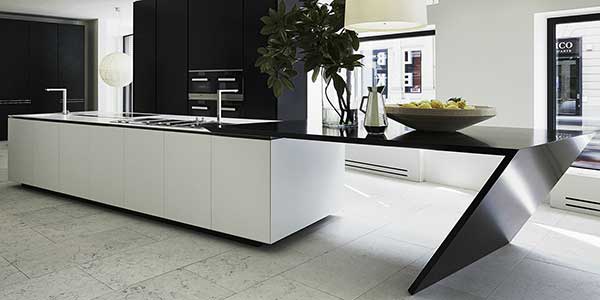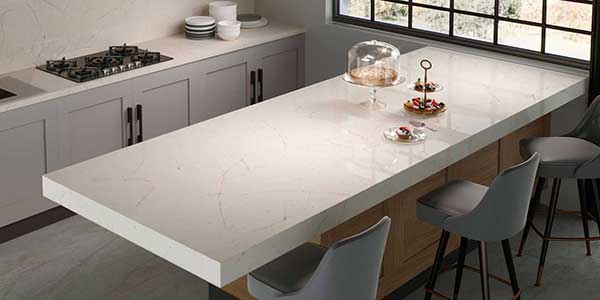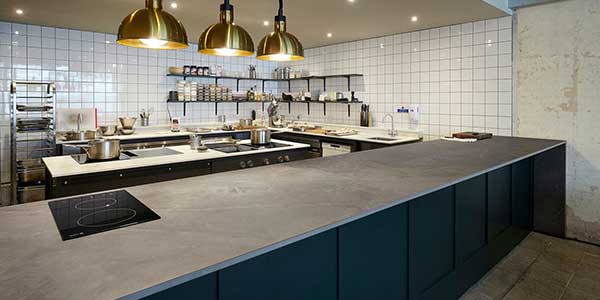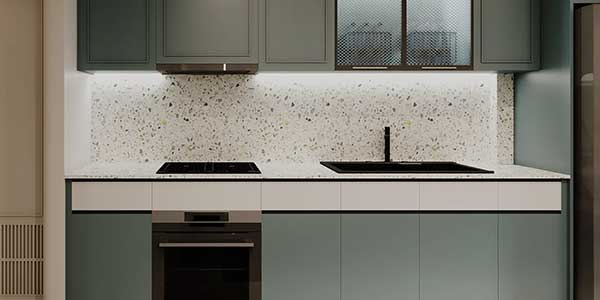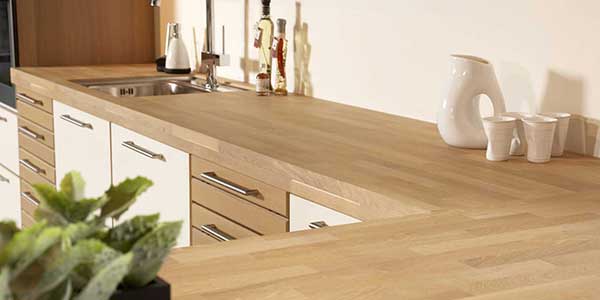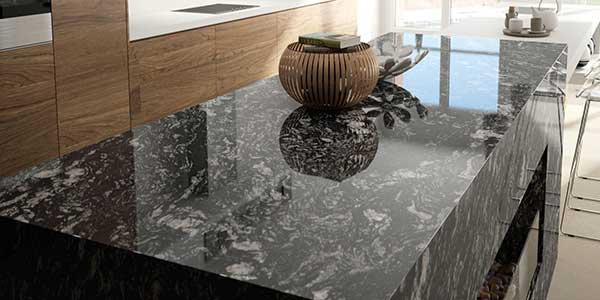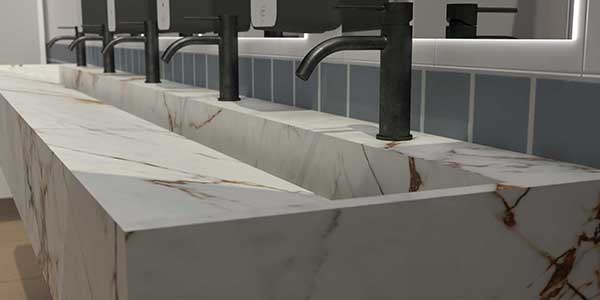How does a Silestone worktop differ from a Natural Stone worktop?
Natural stone has microscopic pores and cracks which can absorb liquids and in which stains can settle and bacteria can grow. Silestone worktops are solid, non-porous surfaces resembling marble and granite, that are highly stain resistant and completely antiseptic, without requiring any sealing. Silestone has a brighter shine than natural stone, because the quartz crystals give it more sparkle.
In addition, Silestone worktops are available in a huge variety of colours, tones, styles, finishes and textures, together with other unique properties not found in natural stone. Styles include a plain, grained or veined appearance and the textures include a polished, suede or “volcano” finish.
Silestone can be joined virtually seamlessly, in ways not possible with the natural stone worktops, further adding even further to its hygienic properties.
Because of its uniform internal structure, Silestone worktops are much harder (7 on the Mohs scale, compared to marble’s hardness of 3) yet more resilient and flexible than natural stone, making it more scratch resistant, possible to be fitted in longer lengths and because of the manufacturing process, different slabs can be better colour matched.
The available colour tones range from light grey to white, cream to beige, dark grey and black, yellow and orange, pink and red, green, blue, and brown, which can be plain, grained or veined and are not dependent on what is produced by the earth when granite and marble stone is quarried.
Silestone is generally more expensive than natural stone, but offers greater variety and many other benefits.
